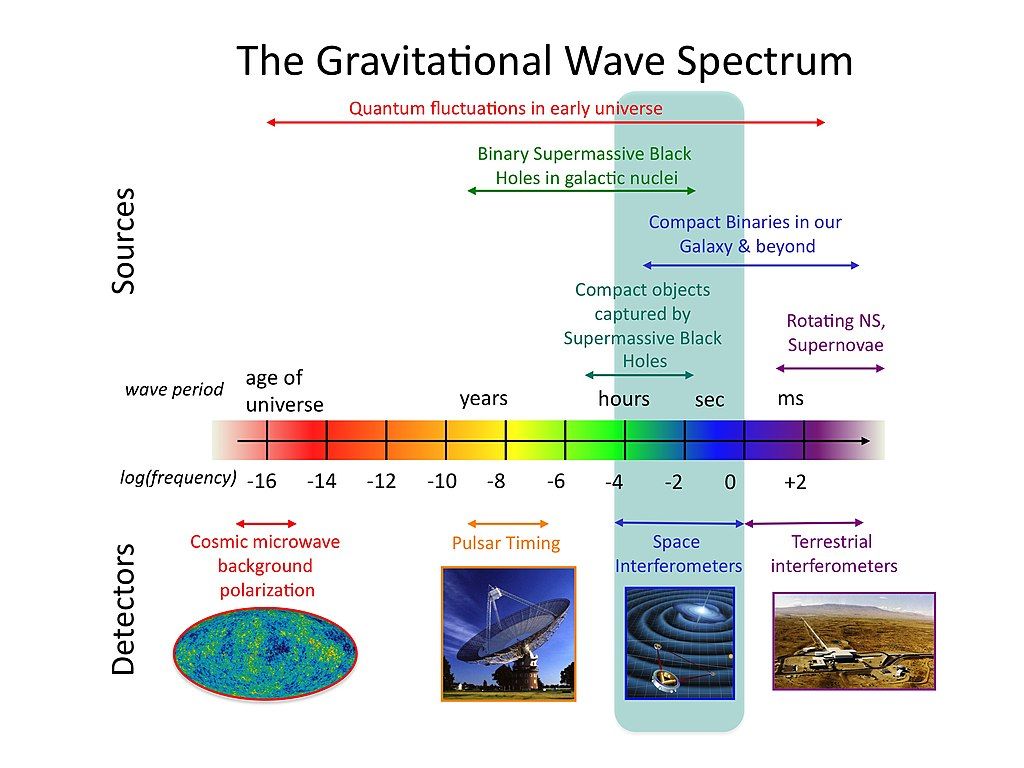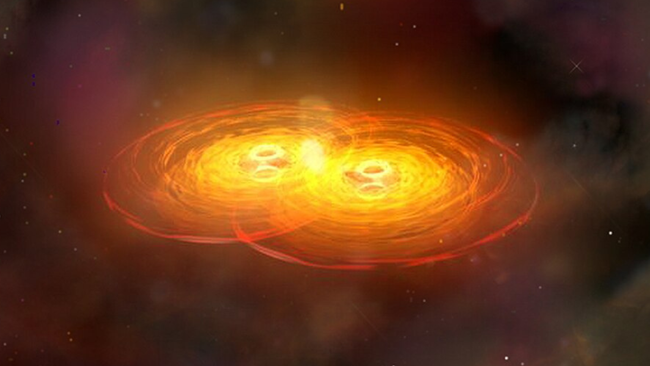Gravitational waves reveal a ‘supercool’ mystery about the Big Bang
Scientists might be on track to revealing new facets of physics.
Actually in 2023 the physicists were suggested about ultra low density waves in spacetime which are collectively called as ripples. These ripples were observed in combination with aggregations of rapidly rotating neutron stars labeled as “pulsar timing arrays.
First, this low-frequency background hum of gravitational waves in the universe was explained as an outcome of the phase transition that took place in the early stages of development of the universe, after the Big Bang. But studies are being carried out which provides this notion a jolt.
“The theorists and experimentalists had previously hypothesized that these nanohertz gravitational waves are produced by a transition that is estimated to have taken place very closely to the time soon after the formation of the Universe; a change that endowed all the fundamental particles at that time with mass,” said Andrew Fowlie of the Xi’an Jiaotong-Liverpool University. But our work identifies several problems with that otherwise nice sounding explanation.
Phase transformations are rapid reversibility of changes of state of a substance, which happens when the substance reaches a certain temperature. The change most familiar to everyone is the change of water evaporating into ice when the temperatures are low. There are also the so-called ‘supercooling ’ transitions, when a substance, for instance water, becomes ‘locked’ in the liquid state and does not freeze.
A large number of researchers are convinced that at the very onset of time a kind of ‘first order phase transition’ took place that caused the formation of gravitational waves or spacetime perturbations. Such waves perhaps, said the gurus might help understand the nature of the universe at the epoch of cosmic inflation, or even before the Big Bang.
Just a phase?
The idea of gravitational waves is rooted back in the theory of gravity that Albert Einstein developed in 1915 called general relativity The general theory of relativity postulated that objects with mass distorted the fabric of spacetime leading to the force of gravity. Finally, general relativity takes it a step further and posits that when objects accelerate, they produce waves in spacetime – specifically, gravitational waves.
Although this effect may not exactly be noticeable in usual acceleration observed on the Earth, it becomes quite substantial in large objects such as supermassive black holes and neutron stars. For instance, when two such massive bodies are in a binary system where such objects revolve around each other, they produce and emit gravitational waves until they merge and make a screeching sound, which is actually the gravitational waves.
Much like electromagnetic radiation, gravitational waves can also be of various frequencies. While high frequency gravitational waves are alike high frequency light in that they have shorter waves and high energy density, low frequency gravitational waves on the other hand possess longer waves and low energy density.
These low-frequency waves also have long ‘periods’ meaning that the time between the passage of one peak point and the next is large.

The signals discerned by the North American Nanohertz Observatory for Gravitational Waves (NANOGrav) pulsar timing array in June 2023 have a relatively higher frequency of frequency than those of supermassive black black hole and neutron star mergers, respectively, that are continuously detected by Laser Interferometer Gravitational-Wave Observatory (LIGO), VIRGO, and KAGRA.
This implies that these low-frequency nanohertz gravitational waves cannot be produced by these facilities hence must be of a different source. The leading hypothesis? Supercool phase transition that took place shortly after the time one refers to by the name of Big Bang.
“When asked about the type of transition needed to produce waves with such small frequencies, Fowlie said, ‘We found that the transition has to be supercool. ’”
However, there’s a catch. Cosmic supercool phase transitions that would hitherto occur are disappeared during epoch of cosmic inflation following big bang.
‘These slow transitions would fall short of their goal because the transition rate is less than the rate of expansion of the universe or, in other words, the fabric of the universe,’ said Fowlie. ‘Even if the shift accelerated towards the end, the number of waves are taken away from the nanohertz range. ’
Fowlie also pointed out the fact that although nanohertz gravitational waves are interesting, they are unlikely to originate from a “supercool” formation.
“If these gravitational waves do indeed come from first-order phase transitions, then there must be something more complicated happening—competing, unknown physics in place,” Fowlie added.
While analyzing their findings, Fowlie and his team agrees that there is a necessity to be even more careful and cautious about the supercool phase transitions, those that could have happened at the very early stages of the universe.
’As these are inherently slow transitions the usual directives on the matter as to whether transitions are complete or not’ he said will not hold. When applying it to gravitational waves and supercool transitions, we come across many subtle issues as to the connection of the transitions and frequencies of the waves; thus the need for more elaborate approaches.
The further development of this area of study could possibly aid in the discovery to questions such as, the creation of the universe.
Improving our understanding of supercool phase transitions could also help to explain such more mundane occurrences.
‘It’s also applicable to more down to earth uses like the diffusion of water in a rock matrix, the process in which coffee brews, and the manner in which a wildfire spreads,’ added Fowlie.
The team’s research is discussed in a paper published in the journal Physical Review Letters.
Do not forget to share your opinion with us to provide you with the best posts !




0 Comments